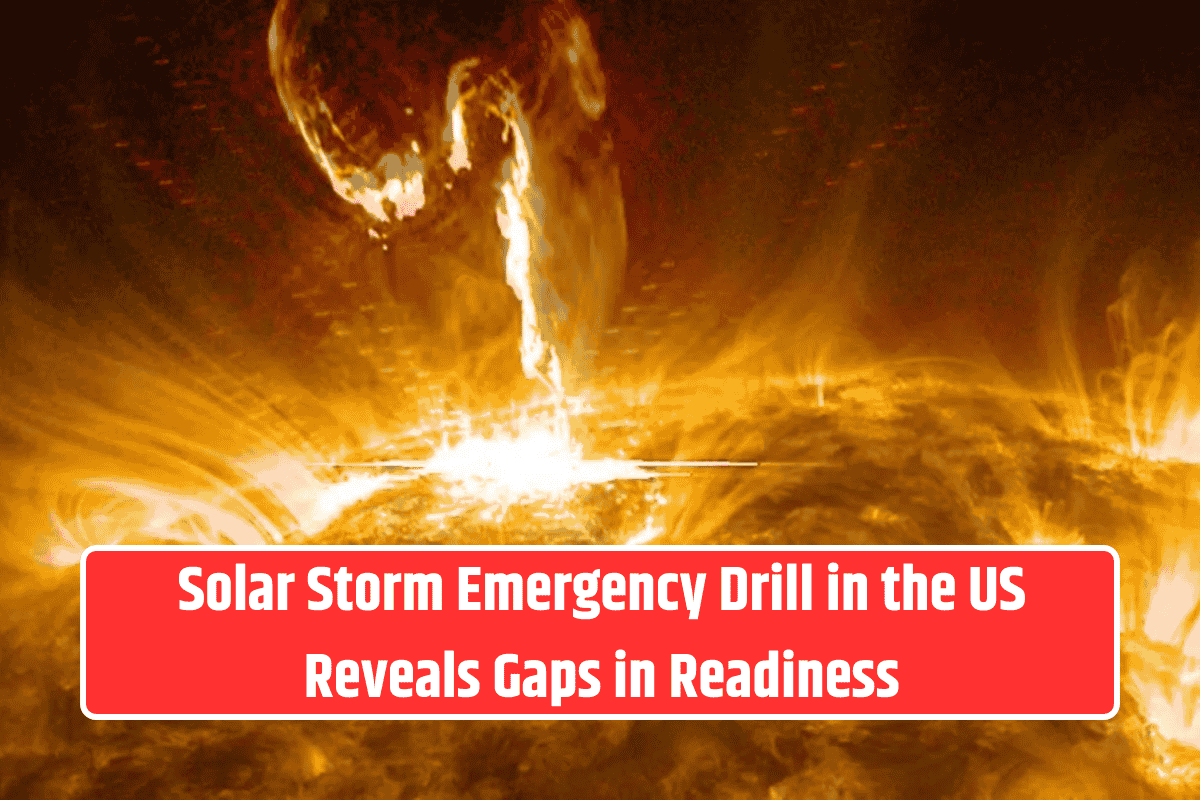The US government recently conducted a major emergency drill to test its ability to respond to a massive solar storm, and the results are worrying. The drill, organized by the Space Weather Operations, Research, and Mitigation (SWORM) task force, showed that many government agencies are not fully prepared to handle the impacts of such cosmic events.
As our world becomes more connected through satellites, the internet, and electronic systems, the threat from solar storms has become more serious. These powerful storms, caused by the Sun, can disrupt power grids, GPS, communications, and even space missions.
What Are Solar Storms?
Solar storms, or coronal mass ejections (CMEs), occur when the Sun releases massive clouds of charged particles. These particles can reach Earth at speeds up to 2 million miles per hour and disturb the planet’s magnetic field. While they create beautiful events like the aurora borealis, they can also cause blackouts, GPS failures, and radio communication issues.
In the worst cases, satellites can be damaged, and astronauts in space could face dangerous radiation exposure.
First National Drill on Space Weather
The Space Weather Tabletop Exercise (TTX) was held on May 8–9, 2024, at the Johns Hopkins Applied Physics Lab and a FEMA office in Colorado. It was the first drill of its kind, involving agencies such as NOAA and the Department of Homeland Security.
The scenario was set in the year 2028, during a fake but realistic solar storm event. The drill included:
- Power and communication failures
- GPS malfunctions
- Satellite and space mission risks
- Two astronauts travelling to the Moon
- Two more astronauts already on the Moon
Each agency was asked how it would handle these problems, and the answers showed that there is a serious lack of coordination and understanding of solar storm threats.
Key Problems Highlighted
The final report found several major issues:
- Lack of public and agency awareness
Many agencies, except those like NASA and NOAA, didn’t fully understand what a solar storm could do or how to respond. - No clear emergency plans
Most departments had no specific Continuity of Operations Plan (COOP) for dealing with space weather. Even those that did had unclear guidelines on when and how to act. - Short warning time
Right now, we only get about 30 minutes’ warning before a solar storm hits Earth. That’s not enough time for agencies to react effectively. - Need for better satellites and sensors
The report recommends investing in better monitoring technology, including new satellites and advanced sensors that can give earlier warnings. - More education and public awareness
Government workers and the public need better education on space weather risks and how to respond if a major storm occurs.
A Real Solar Storm Hit Right After the Drill
Interestingly, just one day after the drill ended, a real solar storm hit Earth. It caused temporary disturbances in power grids and satellite movements—highlighting how real and urgent this threat is.
Although the emergency exercise showed that we are not fully ready, it also helped participants understand the seriousness of solar storms and the importance of interagency communication and coordination.
The US’s first major solar storm emergency drill has revealed big gaps in readiness—from poor coordination among agencies to lack of public awareness. With only 30 minutes of warning before a solar storm hits, early action, stronger communication systems, and better space weather tracking tools are now urgent priorities. These cosmic threats may be rare, but their impact on our digital world can be massive. The next storm could come any day, and this time, the world must be ready.











